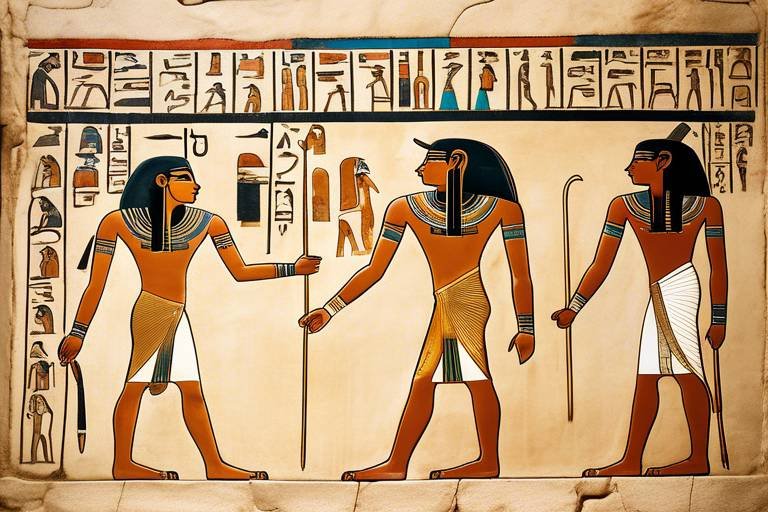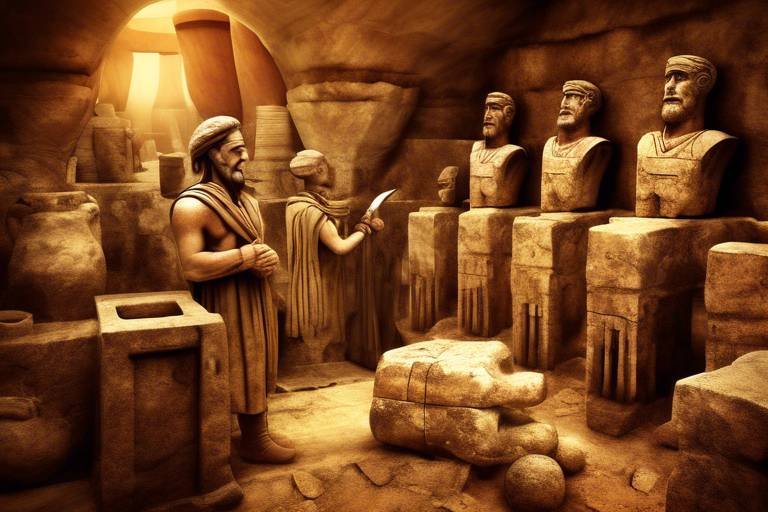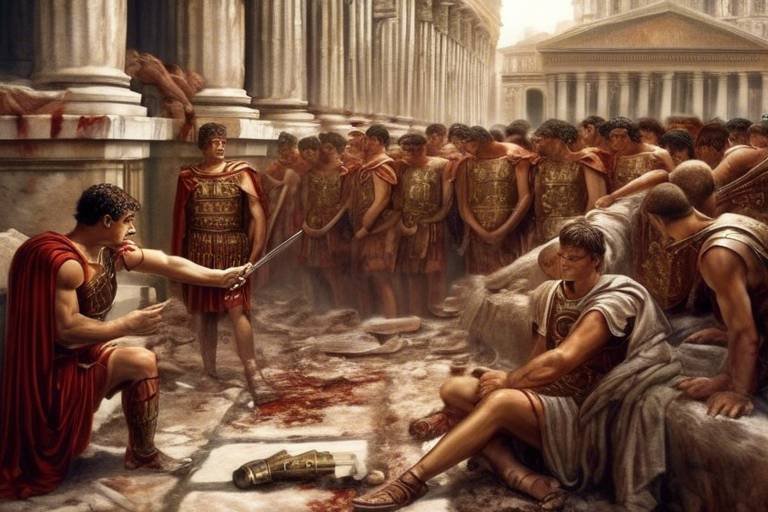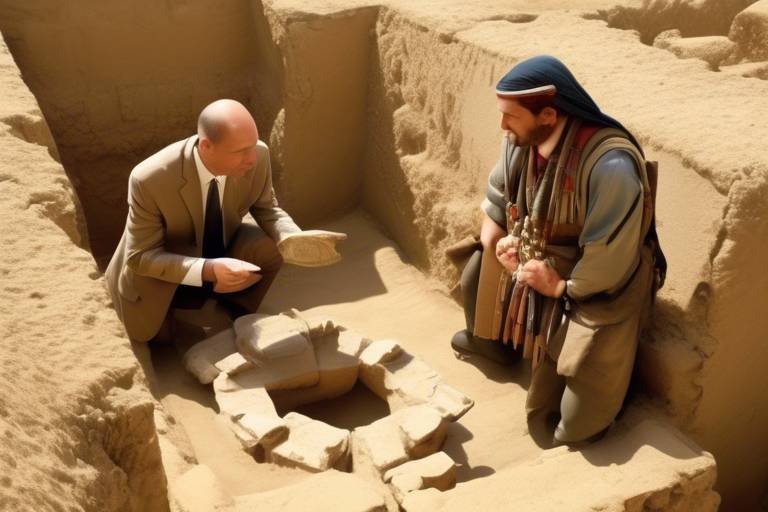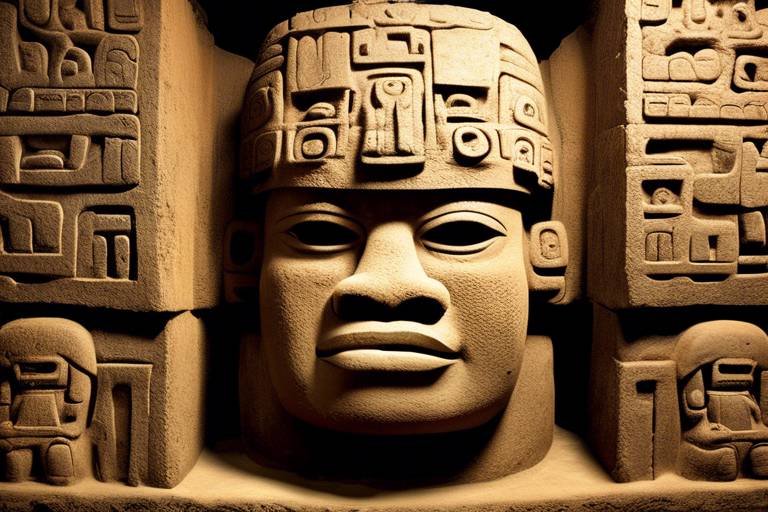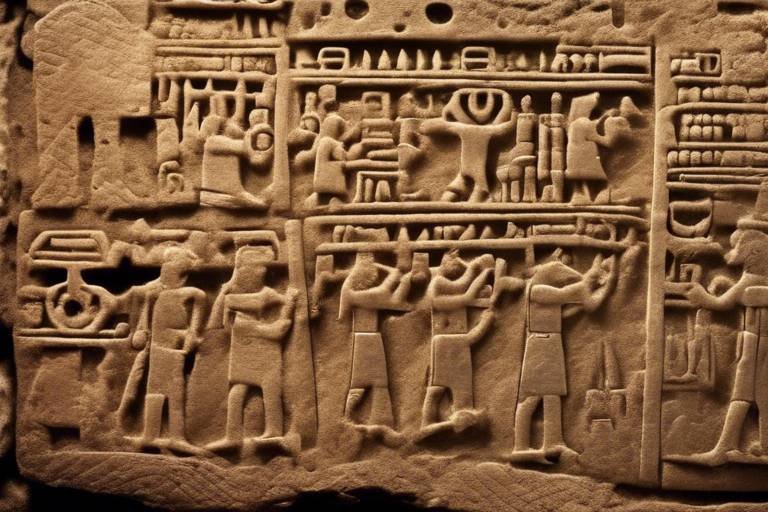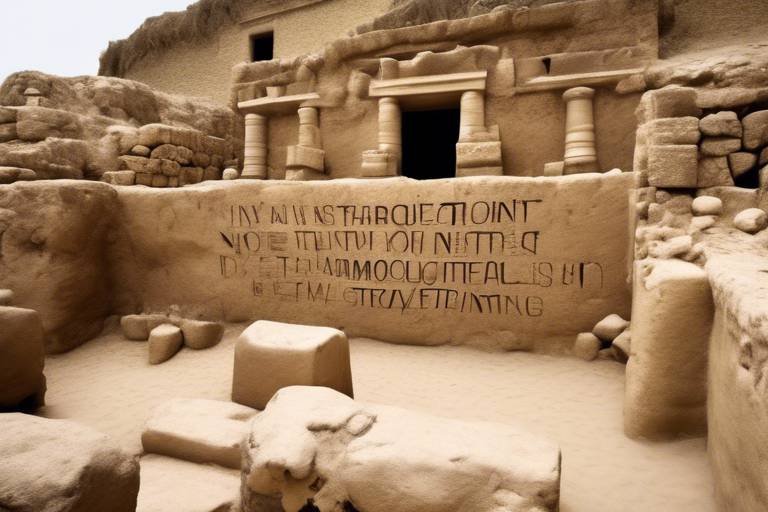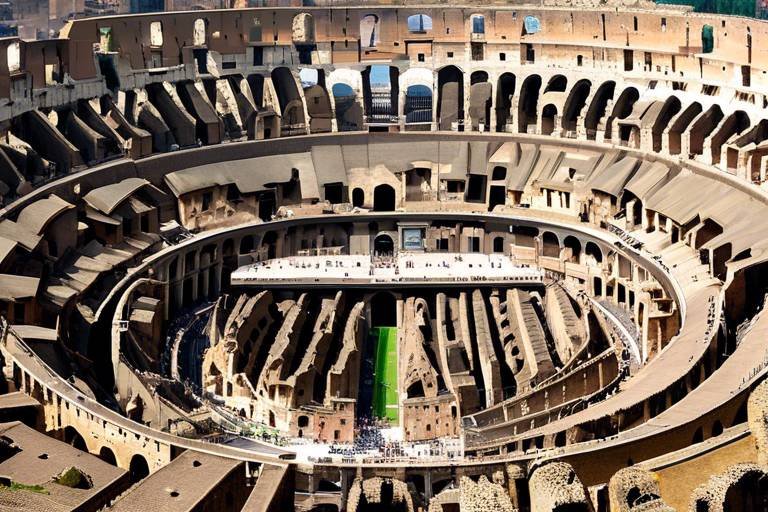Understanding the Role of Writing in Ancient Religions
Writing in ancient religions played a pivotal role in shaping the beliefs, rituals, and traditions of various civilizations throughout history. The origins of writing systems in ancient religious practices can be traced back to the need for preserving sacred knowledge and communicating with the divine. The significance of writing in ancient religions goes beyond mere documentation; it served as a bridge between the earthly realm and the spiritual world, allowing for the transmission of religious teachings and the preservation of cultural heritage.

Origins of Writing in Ancient Religions
The origins of writing in ancient religions date back to the early civilizations that emerged in Mesopotamia, Egypt, the Indus Valley, and China. These ancient cultures developed writing systems as a means of recording important religious rituals, myths, and beliefs. The Sumerians, for example, created cuneiform script on clay tablets to document their religious practices and stories of gods and goddesses. Similarly, the Egyptians used hieroglyphics on papyrus scrolls to write hymns, prayers, and magical spells dedicated to their deities.
Writing in ancient religions served as a tool for priests and scribes to preserve sacred knowledge and communicate with the divine. The ability to transcribe religious texts allowed for the transmission of spiritual teachings across generations, ensuring the continuity of religious traditions. The intricate symbols and characters used in these early writing systems were considered sacred and imbued with mystical significance, reflecting the close connection between writing and religious belief.
Moreover, the development of writing in ancient religions was closely intertwined with the rise of organized religious institutions and the establishment of formal worship practices. Written scriptures played a central role in religious ceremonies, guiding priests in performing rituals and offering prayers to the gods. The act of writing itself was often seen as a sacred act, with scribes viewed as intermediaries between the earthly realm and the divine realm.
As writing systems evolved and spread to different regions, they underwent adaptations and transformations to suit the linguistic and cultural diversity of ancient societies. The emergence of alphabetic scripts, such as the Phoenician and Greek alphabets, revolutionized the way religious texts were written and disseminated. These new writing systems enabled greater accessibility to sacred knowledge and contributed to the democratization of religious learning.
In conclusion, the origins of writing in ancient religions marked a pivotal moment in human history, laying the foundation for the preservation and dissemination of religious beliefs and practices. The development of writing systems not only shaped the religious landscape of antiquity but also left a lasting legacy that continues to influence modern religious traditions.

Symbolism and Sacred Texts
Writing in ancient religions holds a profound significance, serving as a bridge between the earthly realm and the divine. Let's delve into the origins, symbolism, and impact of writing systems in ancient religious practices.
In ancient religions, writing was not merely a means of communication but a sacred art imbued with profound symbolism. The written word was considered a direct channel to the divine, carrying the essence of spiritual truths and cosmic wisdom. Sacred texts, meticulously transcribed by scribes, were revered as vessels of divine knowledge, guiding believers on their spiritual journey.
Within these sacred texts, every stroke of the pen held deep symbolic meaning, representing cosmic forces, spiritual concepts, and mystical revelations. The act of writing itself was a sacred ritual, a harmonious dance between the material world and the spiritual realm.
Through the intricate calligraphy and elaborate scripts, ancient scribes infused the written word with spiritual power, turning mere symbols into conduits of divine grace. The very act of reading and interpreting these sacred texts was seen as a form of communion with the divine, a transcendent experience that transcended the boundaries of the physical world.
Moreover, the preservation of sacred texts was not just a matter of historical record-keeping but a sacred duty entrusted to the chosen few. Scribes, revered for their meticulous craftsmanship and spiritual dedication, were the guardians of ancient wisdom, ensuring that the sacred knowledge was passed down through generations.
As the sacred texts were copied and recopied, each transcription was seen as a spiritual act, infusing the written word with the blessings of the divine. The texts themselves became objects of veneration, housed in ornate temples and revered as embodiments of spiritual truth.

Communication with the Divine
Communication with the divine in ancient religions was a sacred and profound practice that involved the use of writing as a medium to connect with deities and spirits. Through intricate rituals and ceremonies, ancient priests and scribes sought to bridge the gap between the earthly realm and the divine realm through the power of written words.
Imagine a world where written symbols held the key to unlocking the mysteries of the universe, where every stroke of a pen or chisel on a tablet was believed to carry the voice of the gods themselves. In ancient civilizations, writing was not just a means of recording information; it was a direct line of communication with the divine forces that governed the cosmos.
Within the sacred confines of temples and sanctuaries, scribes meticulously transcribed prayers, incantations, and prophecies onto scrolls and tablets, believing that each word written had the power to invoke blessings, curses, or divine guidance. The act of writing itself was seen as a form of worship, a way to honor the gods and seek their favor.
Through the written word, ancient practitioners of religion could convey their deepest desires, fears, and supplications to the divine beings they worshipped. Whether inscribed on papyrus, clay, or stone, these written messages were considered sacred conduits through which mortal beings could commune with the immortal forces that governed their lives.
Moreover, the act of writing in ancient religious rituals was not just a one-way communication channel. It was believed that the gods themselves could respond to written petitions, dreams, and oracles, providing guidance, warnings, or prophecies through the symbols inscribed by human hands.
This intricate dance of communication between the mortal and the divine through writing formed the backbone of many ancient religious practices, shaping the beliefs, rituals, and worldviews of civilizations long past. The power of the written word to bridge the gap between the earthly and the divine realms was a cornerstone of ancient religious traditions, a testament to the enduring significance of writing in the human quest for transcendence.

Scriptures and Rituals
In ancient cultures, the connection between scriptures and rituals held profound significance, shaping the very fabric of religious practices. Written scriptures served as the guiding light for rituals, providing detailed instructions, prayers, and hymns to be recited during ceremonies. These sacred texts were not mere words on paper but living entities that breathed life into the rituals, infusing them with spiritual power and meaning.
Imagine a scroll unfurled before a gathering of devotees, each symbol and word carrying the weight of centuries-old wisdom and divine revelation. The act of reading aloud from these scriptures during rituals was not just a recitation but a communion with the divine, a bridge between the earthly realm and the spiritual plane. The rituals themselves were a dance of words and actions, a symphony of symbols and gestures that wove together the fabric of belief and practice.
Furthermore, the rituals performed in ancient religions were not just empty gestures but intricate ceremonies deeply intertwined with the written word. The scriptures dictated the precise steps to be followed, the offerings to be made, and the prayers to be recited. Every movement, every incantation was a reflection of the sacred texts, a manifestation of the divine will as expressed through writing.
Through the meticulous observance of these rituals, ancient worshippers sought to honor the gods, seek their favor, and maintain harmony with the cosmic order. The written scriptures served as a compass guiding them through the labyrinth of religious observances, ensuring that each action was imbued with meaning and purpose. In this way, writing not only preserved religious knowledge but also shaped the very essence of religious experience.

Preservation of Knowledge
Writing played a crucial role in the preservation of knowledge in ancient religions, acting as a conduit for passing down sacred teachings, rituals, and traditions from one generation to the next. Through meticulously recorded texts, ancient scribes ensured that the wisdom of their religious beliefs was safeguarded for the future. These writings were not merely historical records but living documents that encapsulated the essence of spiritual practices and philosophical insights.
Imagine scrolls carefully inscribed with intricate symbols and profound verses, serving as repositories of divine wisdom that transcended time and space. The meticulous craftsmanship of scribes in transcribing these texts was akin to weaving a tapestry of knowledge, each word a thread in the fabric of religious understanding. The act of writing itself was considered a sacred duty, a solemn responsibility entrusted to those deemed worthy of preserving the sacred truths of their faith.
Furthermore, the written word in ancient religious texts was not static but dynamic, evolving with the changing needs and beliefs of the community. Scribes were not mere transcribers but interpreters of divine will, tasked with elucidating the deeper meanings hidden within the sacred scriptures. Through their meticulous work, scribes ensured that the essence of religious knowledge was not lost but continued to resonate through the ages.
Moreover, the physical medium of writing, whether on papyrus, clay tablets, or parchment, added a tangible dimension to the intangible concepts of faith and spirituality. The very act of inscribing words onto a material surface imbued them with a sense of permanence, anchoring the ephemeral nature of religious beliefs in the solidity of written form. Thus, writing served as a bridge between the ethereal realm of the divine and the earthly realm of humanity, preserving the sacred knowledge for posterity.

Influence on Religious Art
The influence of writing on religious art in ancient civilizations was profound and multifaceted. Writing not only served as a means of recording religious beliefs and practices but also inspired artistic expressions of devotion and spirituality. In many ancient cultures, the written word was intertwined with visual representations of deities, myths, and sacred stories, giving rise to a rich tradition of religious art.
One notable example of the influence of writing on religious art is the intricate hieroglyphics found in ancient Egyptian tombs and temples. These hieroglyphs, which were both written symbols and artistic motifs, conveyed religious teachings and stories while also adorning the walls of sacred spaces. The blending of writing and art in Egyptian culture created a visual language that spoke to the divine and the mortal alike.
Similarly, in ancient Mesopotamia, cuneiform script was not only a form of writing but also a decorative element in religious art. Clay tablets inscribed with cuneiform script were often accompanied by intricate carvings and reliefs depicting gods, rituals, and mythical scenes. The fusion of writing and art in Mesopotamian culture reflected the interconnectedness of language, religion, and visual representation.
Moreover, the influence of writing on religious art extended beyond the realms of architecture and sculpture to include illuminated manuscripts, religious paintings, and religious artifacts. In medieval Europe, for example, monks meticulously copied religious texts and embellished them with elaborate illustrations and decorative motifs. These illuminated manuscripts not only preserved sacred knowledge but also elevated the written word to a form of artistic expression.
Overall, the influence of writing on religious art in ancient civilizations was a testament to the power of language and imagery in conveying spiritual truths and fostering a connection with the divine. By intertwining writing with artistic expression, ancient cultures were able to create enduring masterpieces that continue to inspire awe and reverence to this day.

Education and Scribe Culture
In ancient civilizations, the art of writing was a sacred and revered skill, often reserved for a select group of individuals known as scribes. These scribes underwent rigorous training and education to master the intricate writing systems of their respective cultures. They were responsible for transcribing religious texts, preserving important documents, and maintaining the knowledge passed down through generations.
Education in scribe culture was highly specialized, with scribes learning not only how to write but also how to interpret and understand the religious texts they were tasked with copying. The training involved studying complex symbols, glyphs, and languages specific to religious scriptures. Scribes were seen as intermediaries between the divine and the mortal realm, entrusted with the crucial task of accurately recording and transmitting sacred knowledge.
Furthermore, literacy in ancient religious contexts was not widespread, making scribes essential figures in the dissemination of religious teachings. Their role extended beyond mere writing to interpreting and explaining the texts to the wider community. Scribe culture played a significant role in shaping religious practices, as scribes were often involved in religious ceremonies and rituals, using their knowledge to guide and educate others.
The establishment of scribe cultures in ancient societies contributed to the development of writing systems and the standardization of religious texts. Scribes were held in high regard for their ability to preserve and transmit knowledge across generations, ensuring the continuity of religious traditions. Their dedication to the written word shaped the religious landscape of ancient civilizations and left a lasting impact on the way we understand and interpret religious texts today.

Evolution of Writing Systems
The evolution of writing systems in ancient religions is a fascinating journey that showcases the ingenuity and creativity of human civilizations. From the earliest pictographic symbols to the complex alphabets and scripts we see today, the development of writing has been a crucial aspect of religious expression and communication.
One of the earliest forms of writing can be traced back to the Sumerians in Mesopotamia, who used cuneiform script on clay tablets to record religious hymns, prayers, and myths. This early writing system evolved over time, influencing other cultures in the region and beyond.
Similarly, the ancient Egyptians developed hieroglyphics, a complex system of pictorial symbols that were used in religious texts, tombs, and temples. These intricate symbols not only conveyed language but also held deep religious significance, reflecting the Egyptians' beliefs in the afterlife and divine power.
As civilizations interacted and traded with one another, writing systems began to spread and adapt to different languages and cultures. The Phoenician alphabet, for example, served as the basis for many modern alphabets, including Greek and Latin, which in turn influenced the development of religious texts in Christianity and Judaism.
Across Asia, diverse writing systems emerged in ancient religious traditions, such as the Brahmi script in India, the Chinese characters in Confucianism and Taoism, and the Tibetan script in Buddhism. Each of these writing systems not only recorded religious teachings but also became integral to the practice and dissemination of faith.
Moreover, the evolution of writing systems in ancient religions paved the way for the preservation and transmission of sacred knowledge and wisdom. Monks and scribes dedicated their lives to copying religious texts by hand, ensuring that the teachings of their faith were passed down through generations.
Overall, the evolution of writing systems in ancient religions reflects the profound connection between language, spirituality, and culture. These diverse scripts and symbols continue to inspire awe and curiosity, inviting us to delve deeper into the rich tapestry of human religious expression.

Legacy of Ancient Religious Writing
Ancient religious writing holds a profound legacy that continues to influence modern beliefs and practices. The intricate scripts and sacred texts of ancient civilizations have left an indelible mark on the religious landscape, shaping the way we understand and interpret spirituality today. Through the meticulous preservation of knowledge and traditions, these ancient writings have transcended time, carrying the wisdom of the past into the present.
One of the most significant aspects of the legacy of ancient religious writing is its role in preserving the foundational teachings and beliefs of various faiths. These texts served as the cornerstone of religious education, guiding followers in their spiritual journey and providing a framework for moral and ethical conduct. The enduring relevance of these ancient writings highlights their timeless wisdom and universal truths that resonate across cultures and generations.
Moreover, the legacy of ancient religious writing extends beyond the realm of spirituality, influencing art, literature, and cultural practices. The intricate calligraphy and symbolic imagery found in religious manuscripts inspired artistic expression and creativity, giving rise to a rich tapestry of visual representations that continue to captivate and inspire audiences today. The fusion of writing and art in ancient religious contexts created a powerful medium for storytelling and spiritual contemplation, leaving a lasting imprint on the artistic traditions of diverse cultures.
Furthermore, the legacy of ancient religious writing paved the way for the development of scribe cultures and the dissemination of knowledge through written texts. The meticulous training of scribes and the establishment of scriptoria facilitated the production and distribution of religious manuscripts, ensuring the preservation and transmission of sacred knowledge across generations. The enduring legacy of scribe cultures underscores the importance of literacy and education in ancient societies, laying the foundation for intellectual pursuits and scholarly endeavors.
In conclusion, the legacy of ancient religious writing stands as a testament to the enduring power of words and the profound impact of written texts on human civilization. From the sacred scriptures of ancient religions to the artistic masterpieces inspired by religious themes, the legacy of ancient religious writing continues to shape our understanding of the divine and the mysteries of existence. By delving into the rich tapestry of ancient religious writings, we unravel the threads of wisdom and insight that connect us to our spiritual heritage and illuminate the path to transcendence.
Frequently Asked Questions
- What is the significance of writing in ancient religions?
Writing played a crucial role in ancient religions by preserving sacred texts, facilitating communication with deities, and passing down religious knowledge through generations.
- How did writing influence religious rituals in ancient cultures?
Writing was closely intertwined with religious rituals in ancient cultures, guiding the performance of ceremonies, recording prayers and hymns, and ensuring the accuracy of sacred texts.
- What impact did scribe culture have on ancient religious practices?
Scribe culture was essential in ancient religions as scribes were responsible for copying and interpreting religious texts, maintaining the accuracy of scriptures, and educating future generations in religious teachings.
- How did writing systems evolve in ancient religions?
Writing systems in ancient religions evolved from pictographic symbols to complex scripts, adapting to different languages and cultural contexts while continuing to serve as a medium for divine communication and religious expression.
- What is the legacy of ancient religious writing on modern beliefs?
The legacy of ancient religious writing is evident in modern religious practices, where sacred texts, rituals, and beliefs rooted in ancient traditions continue to shape the spiritual lives of individuals and communities around the world.



